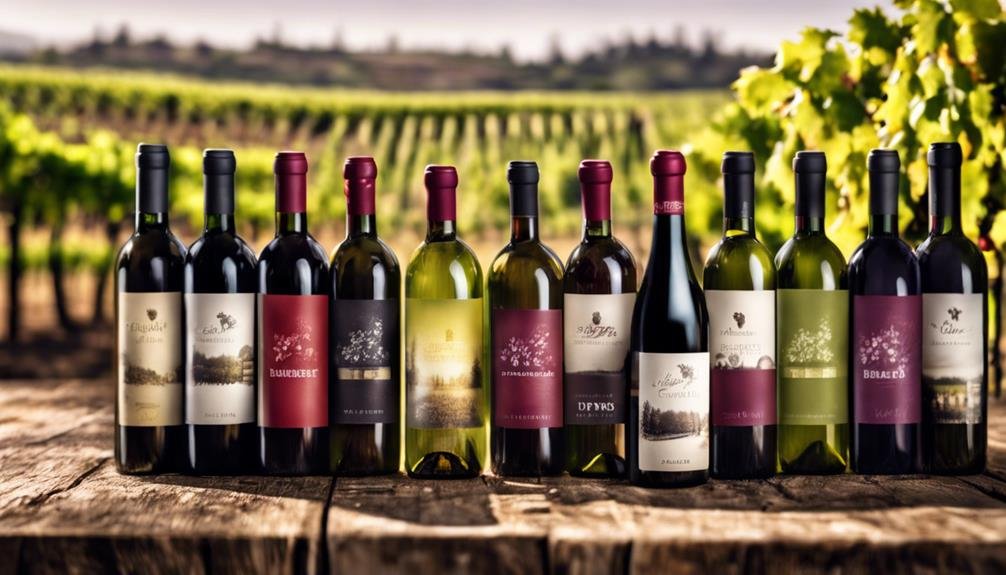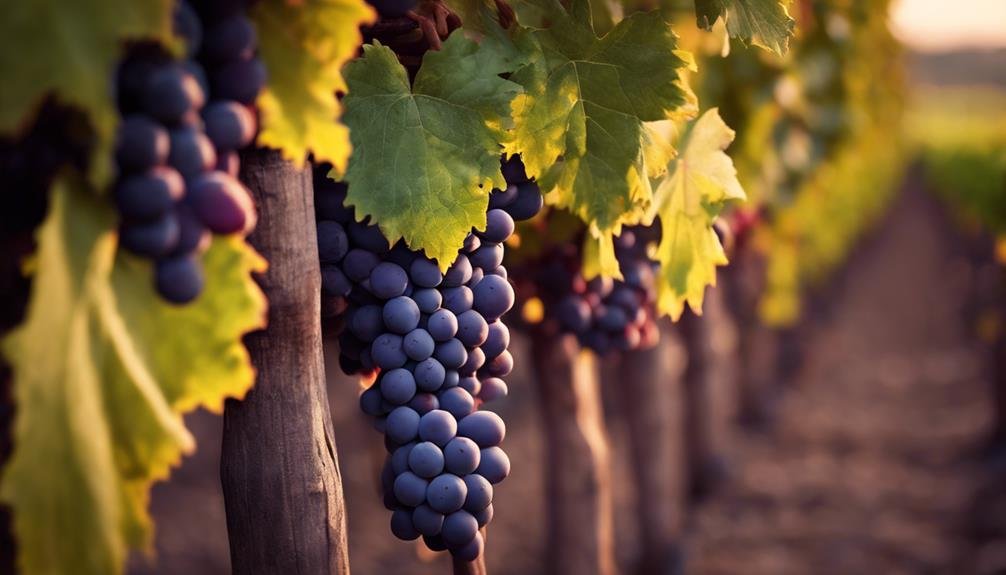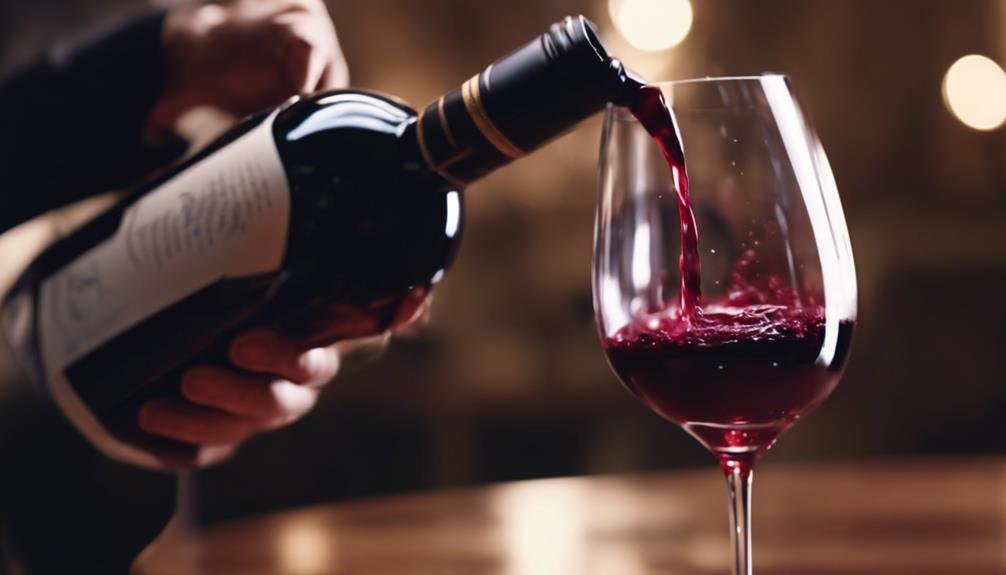Discover the alluring world of Barbera wine with its enticing flavors of dark cherry, dried strawberry, plum, blackberry, violet, and lavender, combined with a unique balance of low tannins and invigorating acidity. From Italy's Alba and Asti regions to the emerging trends in the United States and Australia, Barbera offers a diverse global expression shaped by vineyard terroir and winemaking techniques. Pair this versatile wine with dark meats, mushrooms, and herbaceous cheeses for a culinary adventure. Uncover intriguing facts about Barbera's ancient origins, exclusive sparkling variations, and the impact of oak aging on its richness and complexity. Explore Barbera wine for a truly flavorful experience.
Barbera Wine Tasting Notes
Barbera wine tasting notes reveal a rich tapestry of flavors, including dark cherry, dried strawberry, plum, blackberry, violet, and lavender. These aromas, intertwined with palate nuances, create a vibrant and versatile wine upheld by its low tannin content and high acidity.
The essence of Barbera is deeply rooted in the Vineyard terroir and Winemaking techniques employed during production. The careful selection of oak barrels contributes to the wine's character, enhancing its profile with subtle hints of vanilla, nutmeg, and anise.
Exploring the aroma and taste of Barbera provides a sensory journey through the vineyards, offering a glimpse into the artistry and craftsmanship behind this beloved wine variety.
Barbera Wine Regions Worldwide
Exploring the global reach of Barbera wine, various regions around the world have embraced this versatile grape variety, showcasing unique expressions influenced by their distinct terroirs and winemaking traditions.
In Italy, regions like Alba, Asti, and Monferrato boast extensive Barbera vineyards, each contributing its unique terroir to the wine's profile.
The United States, especially in areas like Sierra Foothills and Santa Barbara, has seen emerging trends in Barbera production, offering a New World perspective on this classic grape.
Australia's regions of Mudgee and McLaren Vale are also making their mark with Barbera wines known for their distinctive characteristics.
Moreover, in Argentina, regions like Mendoza are starting to explore the potential of Barbera, adding to the global diversity of this grape variety.
Understanding Barbera Wine Varietals

Amidst the diverse global landscape of wine production, the intricate nuances of Barbera wine varietals offer a compelling exploration into the depth and complexity of this grape variety.
Exploring vineyards where Barbera grapes grow provides insight into the unique characteristics of this varietal.
Tasting techniques play a significant role in unraveling the flavors of Barbera wines, with notes of dark cherry, dried strawberry, plum, and blackberry being prominent.
Understanding the different expressions of Barbera, whether from Old World regions with tart blackberry notes and high acidity or New World areas known for full-bodied, fruit-forward styles, enhances the appreciation of this versatile grape.
Pairing Barbera Wine With Food
Enhancing the dining experience with Barbera wine involves skillfully pairing its vibrant flavors with a diverse range of complementary dishes.
When considering food pairings, look for rich dark meats, mushrooms, and herbaceous cheeses to complement Barbera's dark cherry and plum notes.
For a congruent pairing, match the wine's flavors of sour cherry, anise, and nutmeg with flavorful recipes that highlight these ingredients.
For a regional adventure, try pairing Barbera with tajarin pasta, Guinea fowl, or porcini stew to create culinary harmony.
Intriguing Facts About Barbera

Revealing lesser-known aspects of Barbera wine exposes a rich tapestry of intriguing facts that captivate both wine enthusiasts and connoisseurs alike. With a history spanning back centuries, Barbera is a grape variety that predates even the renowned Cabernet Sauvignon by a millennium.
In the world of Barbera production techniques, a scandal in 1986 shed light on the use of illegal additives, emphasizing the importance of quality and transparency in winemaking. Additionally, sparkling variations of Barbera are exclusively found in Italy, adding a unique twist to this versatile wine.
Furthermore, the size of grape clusters plays a significant role in the quality of Barbera, with smaller clusters often yielding more flavorful results. Moreover, some Barbera wines undergo oak aging to enhance their richness and complexity.
Frequently Asked Questions
Is Barbera Wine Suitable for Aging in the Cellar?
Barbera wine can be suitable for cellar aging due to its high acidity and low tannin levels, which help preserve its vibrant fruit flavors. With proper storage conditions, some Barbera wines can develop added complexity over time.
What Unique Characteristics Make Barbera Stand Out From Other Red Wines?
Barbera wine distinguishes itself with high acidity, low tannins, and a mish-mash of dark cherry, plum, and violet notes. Its food-friendly nature pairs well with dark meats and herbaceous cheeses, while some aged variants offer rich, complex flavors.
Are There Any Specific Winemaking Techniques That Enhance Barberas Flavor?
Barbera's flavor can be enhanced through specific winemaking techniques like barrel aging and fermentation methods. Utilizing grape variety and vineyard practices, winemakers can elevate Barbera's profile, balancing its high acidity and fruit-forward nature.
How Does the Terroir Influence the Taste of Barbera Wines From Different Regions?
Soil composition and climate variations serve as the artistic palette, shaping Barbera wines into unique expressions. The terroir's fingerprint, akin to a painter's brushstroke, imbues each sip with regional nuances, from earthy minerality to sun-kissed fruit.
Can Barbera Wine Be Used in Cooking, and if So, What Are Some Recommended Dishes?
Barbera wine can be a delightful addition to cooking. Its high acidity and fruity notes make it ideal for enhancing dishes like Barbera pasta or Barbera risotto. The wine's flavors complement rich dark meats, mushrooms, and herbaceous cheeses.
Conclusion
To sum up, Barbera wine is like a symphony of flavors, blending dark cherry, plum, and hints of vanilla and nutmeg in a harmonious balance.
Its diverse origins across the globe add layers of complexity and richness to its profile.
Whether enjoyed as a bold New World treat or a classic Old World delight, Barbera offers a unique and enthralling experience for all wine enthusiasts.
Cheers to exploring the delightful world of Barbera wine!
